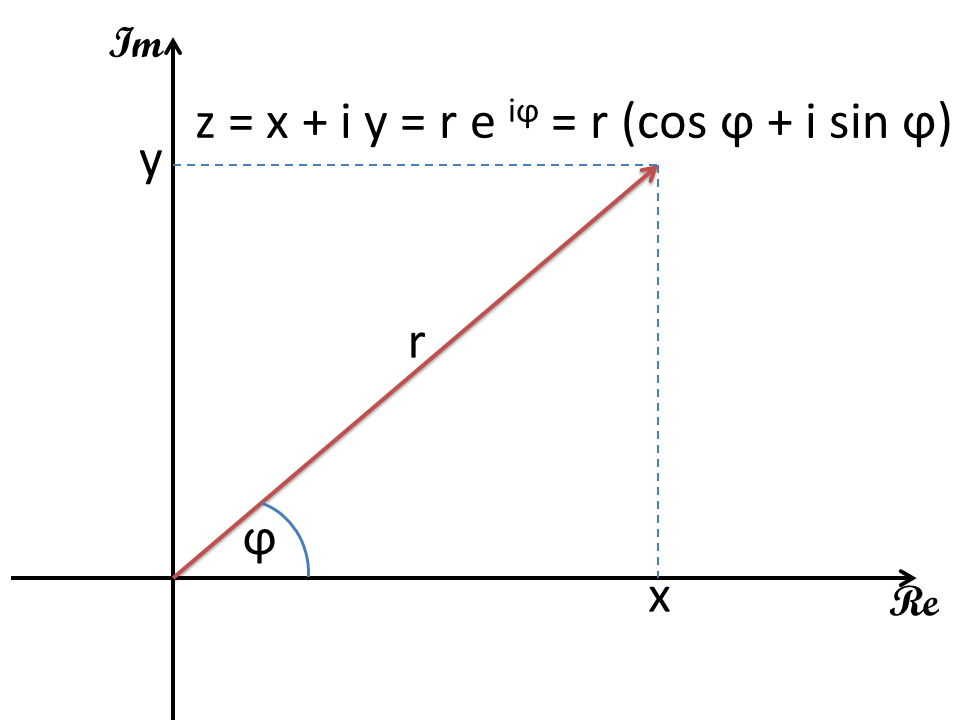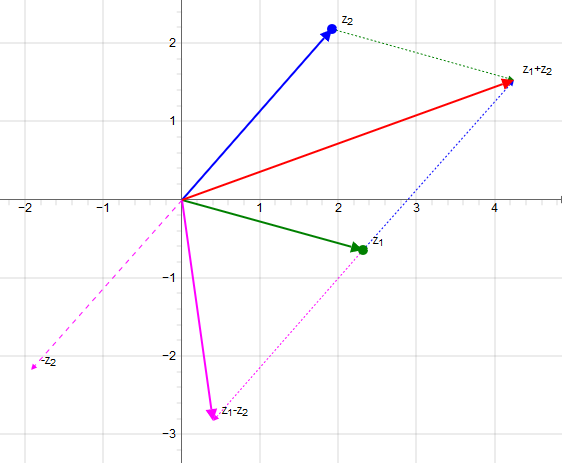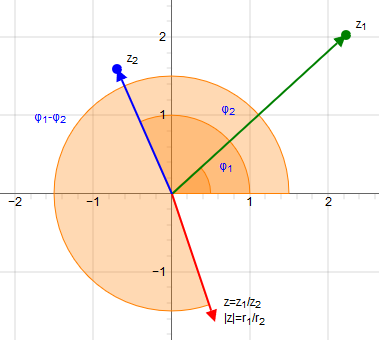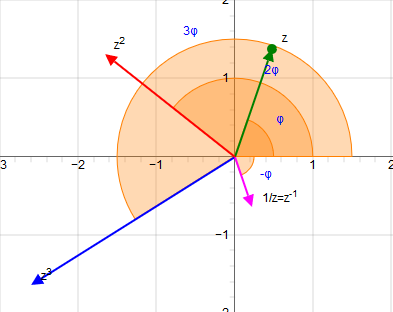Complex Numbers Calculus
Definitions and notations for complex numbers

The complex numbers are an extension of the real numbers. Many computational rules of real numbers can be applied to complex numbers.
The theory of analytic functions dealt with functions of a complex variable.
The Origin of complex numbers is due to the release of algebraic equations. The origin of the theory of imaginary numbers, that is, all numbers whose square is a negative real number, going to the Italian mathematician Gerolamo Cardano and Rafael Bombelli in the 16th Century. The introduction of the imaginary unit i as the new number is attributed to Leonhard Euler.
The complex numbers are two-dimensional and can be used as vectors in the Gaussian plane of numbers represent. On the horizontal axis (Re) of the real part and on the vertical axis is applied (Im) of the imaginary part of the complex number. Vectors may also be similar to either the complex number in Cartesian coordinates (x, y) or polar coordinates (r, φ) can be expressed.
A complex number z consists of a real part x and an imaginary part y. The imaginary part is characterized by the imaginary unit i.
The complex conjugate to z consists of a real part x and the negative imaginary part y. This corresponds to a reflection in the real axis in the Gaussian plane.
The amount of a complex number corresponds in the Gaussian plane with the length of the vector.
The complex number in polar coordinates:
with
and
and the Euler Formula
Complex numbers graphical
Relationships of complex conjugate numbers
For complex conjugate numbers, the following relations hold.
Rules for computing with complex numbers
Addition and subtraction of complex numbers

The addition and subtraction of complex numbers corresponding to the addition and subtraction of the position vectors. That the real and imaginary components are added or subtracted.
Graphical addition of complex numbers
Multiplication of complex numbers

The multiplication is done by multiplying out the brackets considering the relation i2= -1.
The multiplication of complex numbers can also be done in trigonometric or exponential form.
Graphical multiplication of complex numbers
Calculator: Multiplication of complex numbers
Division of complex numbers

The division is carried out by the fraction is expanded with the complex conjugate of the denominator.
The division of complex numbers can also be done in trigonometric or exponential form.
Graphical division of complex numbers
Calculator: Division of complex numbers
Basic complex functions f(z)
Complex number cartesian
Real part
Imaginary part
Conjugate
Amount
Argument
Polar
Square
Reciprocal
Square reciprocal
Square root
Exponential function
Logarithm
Sine
Cosine
Sine hyperbolicus
Cosine hyperbolicus
Tangent

Powers of complex numbers
The power of a complex number in the n-th potency is done by using the formula of Moivre.
or with the binomial theorem
Calculator: Complex Binomial Theorem
The calculator computes the power of the given complex number with the binomial theorem.
For general complex exponents is:
with zω as main value. If ω is not rational so there are infinite number of solutions.
Graphical power complex numbersCalculator (Cartesian)
The calculator converts the given complex number from cartesian representation to the polar form. The angle is in radian.
Complex number cartesian
Conjugate complex number
Amount
Angle
Polar
Calculator (Polar)
The calculator converts the given complex number from polar representation to the cartesian form. The angle is in radian.
Complex number polar
Complex number cartesian
Conjugate
Amount
Releated sites
Here is a list of of further useful sites:
Complex numbers calculator Complex numbers graphically Addition complex numbers graphically Multiplication complex numbers graphically Division complex numbers graphically Power complex numbers graphically Complex functions